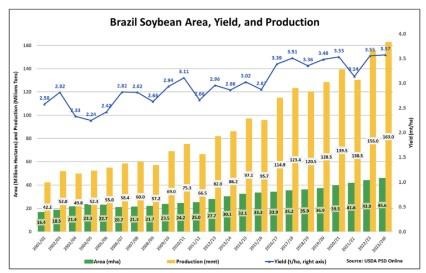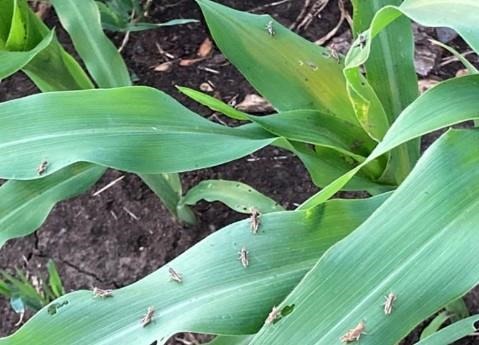By Bruce Potter

Figure 1. Recording growth data on sentinel plants before placing them in a soybean field.
Two species of bean (Phaseolus) were identified as additional hosts of the soybean gall midge (SGM), Resseliella maxima, during the 2022 growing season.
SGM was able to colonize several dry bean (Phaseolus vulgaris) cultivars and a lima bean (Phaseolus lunetus) cultivar in a study using “sentinel” (i.e., potted) plants placed in a soybean field with a history of significant SGM infestations Rock County (Figure 1). Additionally, SGM-infested plants were found in two navy bean fields in Lac Qui Parle County. The DNA of collected larvae matched SGM as did the morphology of adults emerging from infested navy bean stems.
SGM symptoms

Figure 2. Soybean gall midge infestation in navy bean stem (Lac Qui Parle County)
The external symptoms of SGM infestation on Phaseolus stems (i.e., brittle stems and dark discoloration of the stem surface around larval infestation) resembled those on soybean. However, infestations on Phaseolus were often located at the juncture of a lower leaf petiole and stem, and into the pith in some cases (Figure 2).
Sentinel plant study
In the study with sentinel plants, the percentage of infested dry bean and lima bean plants (8 to 25%) was much lower than that for three soybean varieties (58 to 67%). These differences in infestation rates are similar to those observed in navy beans and nearby soybean fields in Lac Qui Parle County. These results suggest that soybean may be a better host than Phaseolus for SGM egg-laying or larval development.
Curiously, Phaseolus is not closely genetically related to the previously documented legume hosts of SGM. Furthermore, Phaseolus has a New World origin rather than Asian like soybean.
Although economic losses to dry beans from SGM injury have not been observed, this study indicates that Minnesota dry bean growers should note any wilting and lodged plants on field edges, particularly near the previous year’s soybean fields in areas where soybean gall midge is known to occur.
Confirmed hosts of SGM expands
SGM is a tiny fly in the gall midge family (Diptera: Cecidomyiidae) whose larvae are significant pests of soybean. SGM larvae feeding beneath the outer layer of the lower stem can cause wilting and death, or brittle stems and lodging of soybean. SGM was determined to be a new pest of soybean in 2018 and the species description was published the following year. It is not known whether SGM is an introduced pest or a native species that has adapted to soybean. In addition to soybean, SGM has previously been found on sweet clover and more rarely alfalfa, but Phaseolus had not previously been confirmed as a host.
Source : umn.edu